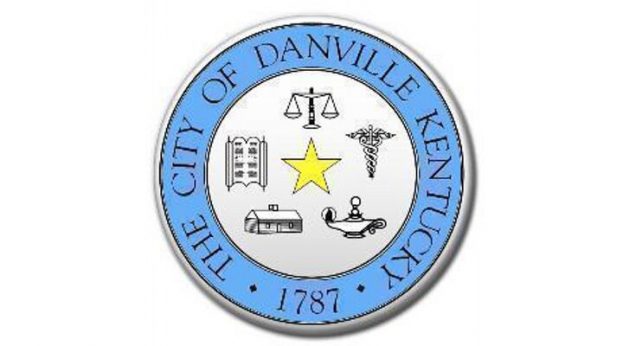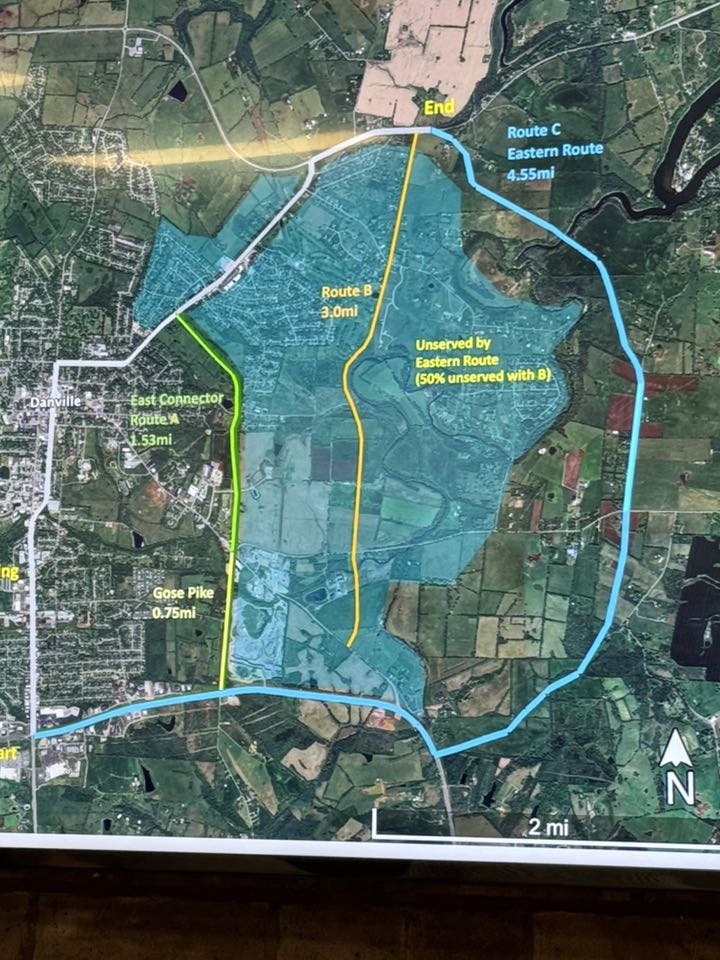City commission approves recommendations for public art guidelines
Published 10:38 am Tuesday, June 1, 2021
The Danville City Commission has unanimously approved staff recommendations for public art guidelines presented by the Danville Architectural Board. As they stand, murals painted or installed in historic downtown will be classified as signs, and if their proposed sizes exceed the Danville-Boyle County Planning and Zoning Commission’s size guidelines, artists can apply for a variance.
The recommendations were approved at the city commission meeting on May 24. The next step will be that the guidelines will be reviewed by the Kentucky Heritage Council, and city staff also has the OK to put recommendations in a final format to be approved by the commission at a later date.
Joni House, preservation coordinator of the DAHB, presented the recommendations to the commission. She said the DAHB and the commission have discussed potential guidelines in the past, and coming up with guideline recommendations has been a two-year process, partially because the COVID-19 pandemic interrupted the majority of the time deciding on recommendations. The city’s historic overlay district has also been under a public art moratorium since February and until guidelines are finalized. The moratorium is still in effect.
Trending
House said during the meeting that in discussion between the city commission and DAHB from 18 months ago, there was a general community consensus for a desire to have public art within the historic district.
“It contributes to the vibrancy of the community, and so that was generally agreed on, that everyone wanted to see that,” she said.
There was also a discussion of whether to have public art on just “non-contributing” structures or “contributing” ones as well, and she said the general consensus was to have public art throughout the district, whether on “non-contributing” or “contributing” structures.
She said how murals should be applied and materials that can be used haven’t changed within the current guidelines.
“The big problem is, what size do we want for the mural?” House said. “That has been a point of issue since we began this.”
That is where the meat of the recommendation lies — how large murals can be and what they are classified as.
Trending
House said her recommendation is that since planning and zoning already has language that defines pictorial representations as a sign, murals should follow sign sizes already established by planning and zoning, and that planning and zoning would be able to grant variances on size on a case-by-case basis.
She said as far as the DAHB goes, it looks at how it is applied to a building and if the mural does architectural damage, so the sign size isn’t an issue for the DAHB — that’s a planning and zoning issue. The current planning and zoning sign ordinance holds that a sign be 25% of a building’s surface area or less. So, if an artist wanted their mural larger, they could apply for a variance through planning and zoning.
Other key recommendations as outlined in the draft for guidelines for public artwork are as follows:
• To “locate murals on side or rear elevations,” as “Murals are not appropriate on the primary facade of the building,” and that temporary murals be permitted, but only for 30 days and on a case-by-case basis.
• To locate art so as not to “obscure, alter or cause damage to a structure’s character-defining features,” and art should not impair interpretation of “historic character of a structure or overall district.”
• That one mural be allowed per structure.
• Anti-graffiti treatment coatings are “highly recommended.”
• Only “high-quality materials such as exterior grade paints” be used.
• It’s “encouraged” that murals be put on “removable materials such as plywood.”
• “Adhesive films may not be mounted directly to structure.”
• The maintenance agreement will be signed by the building owner and applicant.
• “Murals are permitted for five years.”
• The “property owner is responsible for proper maintenance of the mural, including all repairs,” and “Fading, peeling or material failures must be corrected within 60 days.”
House said, “It would be my recommendation that we have some agreement to dismiss the city from any liability with that building owner as well as the artist.”
She said this is in case the mural isn’t taken care of or if the building changes hands and the new owner didn’t want the mural on the building.
Commissioner Kevin Caudill shared questions the Art Center of the Bluegrass has posed about guidelines with House. This included a question about what happens after five years. House said the building owner and applicant could sign a new maintenance agreement.
Caudill said another concern from the Art Center was about the installation of murals on removable substrates, since that can decrease the longevity of the piece. House responded that there is not a requirement that pieces be on removable substrates. Depending on the building and the materials used, the mural could be applied directly onto the building. An exception to this includes that paint cannot be applied to unpainted masonry due to National Park Service guidelines.
As for the requirement against adhesive films, another topic Caudill said the Art Center questioned, House said, “We’re following the National Parks guidelines, again, about adhesive films onto buildings, particularly masonry. If you try to put a vinyl adhesive film on a masonry building, it could actually not come off, and therefore, that damages the historic structure of the building, or the historic fabric.”
One thing both House and city attorney Stephen Dexter stressed was that the city had no say on content of art used for murals due to the First Amendment right to free speech.
“Content will not be considered, period,” Dexter said after Commissioner James “J.H.” Atkins asked about content.
Atkins replied, “That changes my whole attitude about it. I think this is the right approach. I know what the law says, but I can just imagine what someone could propose could be on the side of a building.”
Mayor Mike Perros said in terms of content, unless the artist owned the building, perhaps that’s where the building owner could say no to the content of the art.
“That’s where some of the discretion would come into mind, Dexter confirmed. “If someone presents a mural, and a property owner is willing, the property owner would either have to deem it a viable project for his or her structure or not in order to proceed.”
In other business, during the city commission meeting:
• City manager Earl Coffey announced that the June 14 city commission meeting will be open to the public. It will also be livestreamed for virtual viewing.
• The city commission unanimously proclaimed the week of June 7-13 as National Garden Week. Additionally, Perros said the Danville Garden Club is celebrating its 85th year of service.
• Lynn Tye was unanimously appointed to the Danville-Boyle County Convention and Visitors Bureau.
• The city commission unanimously approved that the city apply for a trails grant to attempt to receive funding for a pedestrian refuge island near where two trails meet at Stanford Avenue near David Drive. City Engineer Josh Morgan said the city has been trying to work with the Kentucky Transportation Cabinet for approval for a crosswalk there but has been struggling to find a safe solution, so this is an alternative. He said he anticipates the project costing $120,000, and should the city receive the grant, the city would be responsible for about $24,000 of that.







